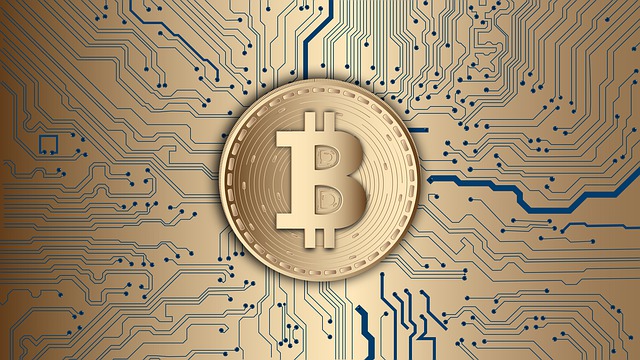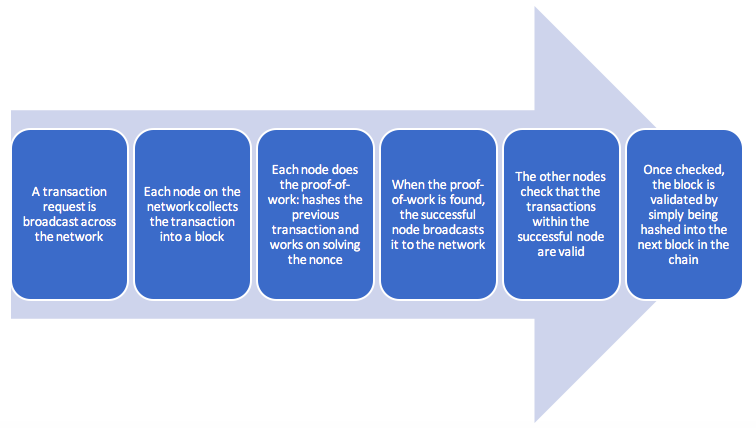
The Blockchain, explained
If you’re looking for the blockchain explained in the simplest terms, the good news is that the basics are actually really easy to grasp and you need absolutely no prior knowledge. Blockchain, put simply, is a decentralized distributed ledger which stores data (such as transactions, records etc.) in the form of blocks, laid out chronologically in a chain and connected to each other through cryptographic algorithms.
Or, the even simpler version: blockchain is a technology by which a network of computer nodes stores and shares data. What makes the blockchain such a fascinating and hot topic is that the way in which the sharing and storing are done is pseudonymous, unalterable and decentralized.
The magic of blockchain, explained for absolutely everyone
Trying to get blockchain explained to newbies is easiest if you start with the problem it solves – because everyone understands transaction insecurity.
Imagine if you were to buy a car from a friend. He’s got the papers, but then he, too, bought it second-hand from someone else, who, in turn, claims they inherited it from an uncle. How do you know if the mileage or the uncle are real? How do you know what problems there might be under the hood? Where did it come from, initially? Papers might have gotten lost, misplaced or even altered along the way, as it so often happens with things in the real world.
If you want the actual technology of blockchain explained, on the other hand, things get a bit more complicated and a few math or cryptography notions might help. The basic principle, though, is that on the blockchain transactions simply cannot be altered or misplaced. Once recorded in a block, transactions are visible to anyone, yet no one can tamper with the records. Because this technology operates like a distributed ledger, there is no one place in which data is stored. Instead, all participants to the blockchain store and can see the data.
The technology of blockchain, explained
There are now so many blockchains and types of blockchains that the explanations you get might vary widely depending on who’s talking. Always aim to get blockchain explained by those closer to the initial technology.
How does this crazy little thing work? Imagine a chain made up of blocks of information. Each link in the chain, i.e. node, contains a set of data: a number of transactions, a digital signature, a set of cryptographic information about the previous node (a so-called hash), as well as the solution to a mathematical puzzle. In this manner, each node connects to the previous node and will be linked in the next node that is added in the chain. No modifications can be operated without altering the entire chain – which, in practical terms, means modifications are pretty much impossible.

The mathematical puzzle consists of finding an individual number of a set length, called a nonce. This number cannot be found by a mere person sitting in front of a computer screen; it can only be found through a massive computational effort by a powerful CPU – or, more accurately, GPU. The computational effort, i.e. the physical computer and electricity resources spent to solve the problem, are the so-called proof-of-work that allows the user to create the block and receive the reward in bitcoin (or whatever coin that particular blockchain is using).
Rewards on the blockchain, explained
In fact, the inventor of the blockchain, the mysterious Satoshi Nakamoto, has simply devised a way in which every participant in a network is incentivized to store and record transactions through this new “digital cash” (that is, cryptocurrency) reward.
Everyone is on the blockchain to transact something – for instance, to sell, buy, or move assets. When this happens, the transaction code is broadcast across the network, and each node in the network (meaning, each computer unit participating in the blockchain) receives and collects the transaction into a block.
Each node, then, does the proof-of-work as described: hashing the previous transaction and trying to solve the mathematical problem. Once the proof-of-work is found, it is automatically broadcast to the network, which checks that all transactions within the block are valid. Once the block has been checked, the network accepts it by simply hashing this block into the next block in the chain.

Blocks are about 1MB in size and take about 10 minutes to get through. That means that someone mines a new block every ten minutes, and consequently gets a crypto reward. The reward currently stands at 12 bitcoins. Hash difficulty is adjusted to keep block mining at ten minutes, and rewards are halved periodically according to the blockchain’s algorithm and philosophy.
The best way to have the bitcoin blockchain explained would be, if you’ve got the minimum knowledge, to read Bitcoin’s white paper, an example of elegant innovation.
The advantages of blockchain, explained
There are many blockchains out there. The mother of all blockchains is that created by Satoshi Nakamoto for his Bitcoin cryptocurrency in 2009. However, many others were created over the past 10 years, attempting to correct or improve the Bitcoin blockchain: improve speed of transaction, make the network nimbler and less resource-greedy, add layers of data (such as smart contracts), support certain types of transactions and more. Each coin out there (be it Monero, Ethereum, Neo etc.) has its particular blockchain code behind it, but some blockchains are created simply to support certain enterprises rather than mint crypto. In other words, blockchain technology has become a thing in itself, rather than a backend platform for creating “digital cash”, as Nakamoto envisioned it.
There are good reasons for the booming blockchain industry, some of which are ingrained into its very structure.
- Blockchains are entirely decentralized: all nodes participate in the network, so there is no one point of failure and no one source of validation.
- They are also pseudonymous: nodes are entirely transparent, i.e. digital signatures can be seen by all and checked by all, however node owners are not physically disclosed unless in very special circumstances (mostly having to do with law enforcement). On the blockchain, your identity is your digital signature.
- Finally, the blockchain is, in principle, unalterable. Because each block connects to the one before, and so on down to the very first block created in 2009, transactions on the blockchain cannot be reversed. On one hand, that means you cannot get your money back; on the other, it means no one can go back and falsify a transaction, because that would invalidate all the blocks that come after it.
There are exceptions to this principle, such as Ethereum’s reaction to the DAO hack: Ethereum code was partly to blame for the $150M theft, and, in order to preserve Ethereum’s integrity, a decision was made to reverse code back from the moment of the hack. This incident is widely considered to be a pivotal and highly controversial moment for the blockchain philosophy. However, it was a lesson all blockchains learned from.
The future of the blockchain, explained
Although it might sometimes appear blockchain and bitcoin magically came out of thin air, the fact is, when he came up with his “Bitcoin” paper in late 2008, Nakamoto relied on a long history of cryptographic algorithms and code to lay out a very coherent platform for the new “digital cash” he was proposing. Its history and its present are, in fact, proof that such a platform is needed in today’s world of complex networks and transactions. That the blockchain is useful beyond the creation of crypto assets can already be seen in its wide uses in supply-chain enterprise, in healthcare and insurance and literally any king of complex record-keeping, in executing so-called smart contracts of any kind, from digital rights to real estate management.
That giants IBM and Maersk have signed 90+ companies to a blockchain-based tracking system shows it is no longer a geek-run underground operation, but a future industry and enterprise backbone. Here’s blockchain explained in the simplest terms. For a more comprehensive view, you can always read more about it.
